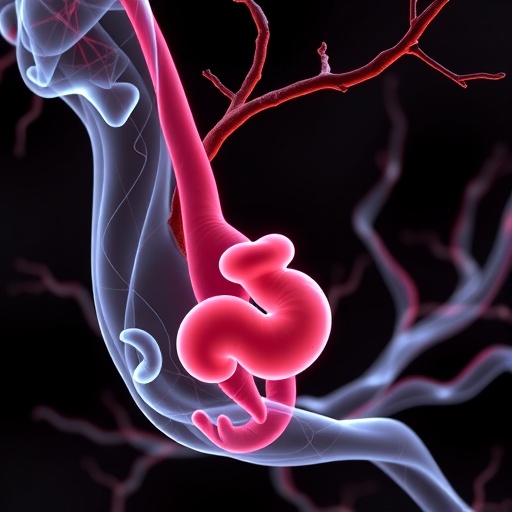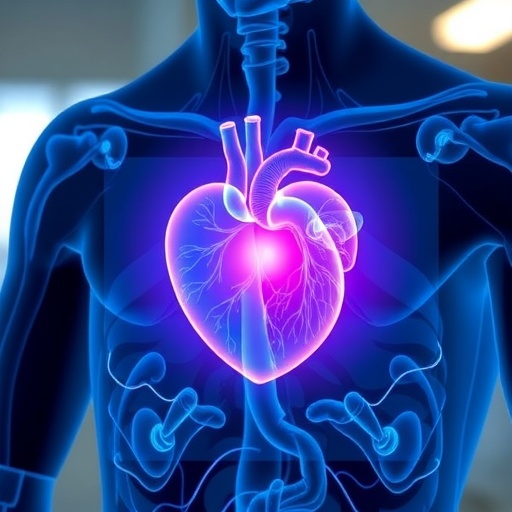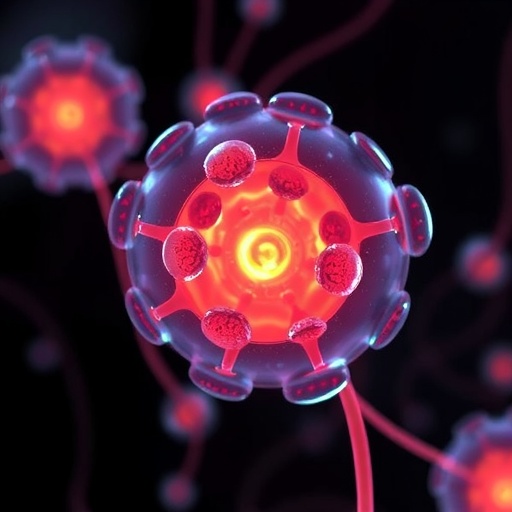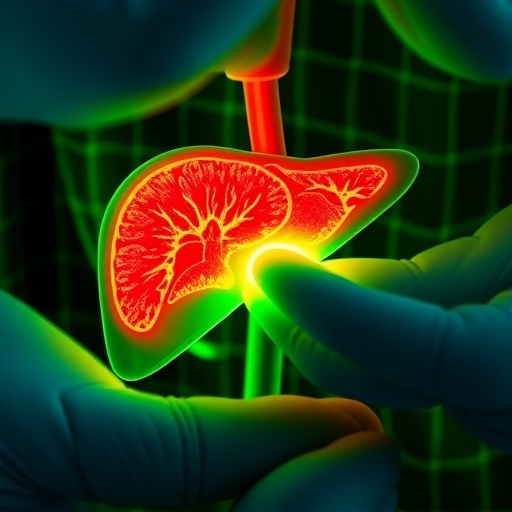PROTECT YOUR DNA WITH QUANTUM TECHNOLOGY
Orgo-Life the new way to the future Advertising by Adpathway
In a groundbreaking study published in the BMC Complementary Medicine and Therapies, researchers have unveiled a fascinating connection between natural products and their ability to induce pyroptosis in neuroblastoma cells. Pyroptosis, a form of regulated cell death, has emerged as a significant area of interest in cancer research due to its potential role in tumor suppression and therapy. The team, led by researchers Lestari and Utomo, embarked on a quest to identify natural compounds that could leverage this unique pathway to combat neuroblastomas, a challenging and aggressive childhood cancer.
The researchers utilized a combination of computational studies and experimental validation to systematically evaluate a plethora of natural products. This innovative approach not only showcases the power of computational biology in drug discovery but also emphasizes the demand for alternative therapeutic strategies in oncology. Neuroblastoma’s inherent resilience to conventional treatments has spurred the search for more effective interventions, and the exploration of pyroptosis represents a promising frontier.
During the initial phase of their research, the team conducted extensive in silico screenings to analyze a diverse library of natural compounds. Using advanced algorithms and molecular docking techniques, they identified several candidates that showed potential in triggering pyroptosis. This computational groundwork paved the way for a more focused experimental phase, where the most promising candidates were tested in vitro on neuroblastoma cell lines.
The experimental validation phase was rigorous and detailed, employing various assays to assess cell viability, pyroptotic markers, and overall cellular responses to treatment. Notably, the researchers observed a striking correlation between specific natural compounds and increased pyroptotic activity in the neuroblastoma cells. The ability of these compounds to induce cell death through pyroptosis highlights a significant shift in the way researchers approach cancer therapy.
One of the most compelling aspects of this study is the potential for these natural compounds to serve not just as standalone treatments but as promising adjuvants to existing therapies. Traditional chemotherapeutic agents often come with numerous side effects and limitations; thus, the addition of pyroptosis-inducing natural products may enhance overall therapeutic efficacy while mitigating some of the adverse effects associated with conventional treatments. The synergy between these natural products and existing drugs can be a game changer in the treatment landscape for neuroblastoma.
Furthermore, the research showcases the intricate relationship between natural compounds and the body’s immune response. By promoting pyroptosis, these compounds may enhance the immune system’s ability to recognize and destroy cancer cells. This immunogenic form of cell death not only facilitates the clearance of tumor cells but can also stimulate a more robust systemic immune response against malignancies, potentially leading to long-lasting protective effects against cancer recurrence.
The implications of these findings extend beyond neuroblastoma. The principles underlying pyroptosis could inspire research into other malignancies that exhibit similar resistance to conventional therapies. By broadening the scope of inquiry, researchers may identify a wide array of natural compounds capable of inducing pyroptosis across different cancer types. This could ultimately lead to more effective, tailored therapeutic strategies that leverage the body’s natural defense mechanisms.
As the scientific community continues to unravel the complexities of cancer biology, studies such as this one underscore the importance of interdisciplinary approaches. Integrating computational methodologies with traditional experimental techniques can accelerate the discovery of novel therapeutic agents and enhance our understanding of cancer cell biology. The synergy between computational and experimental research epitomizes the future of precision medicine and personalized oncology.
The study also raises important considerations about the sustainability and ethical implications of drug development from natural sources. The exploration of plant-derived compounds necessitates a thoughtful approach to sourcing and extraction to ensure minimal ecological impact. Future research endeavors in this realm must address environmental concerns, promoting sustainability while reaping the benefits of nature’s vast pharmacological arsenal.
In conclusion, the discovery of pyroptosis-inducing natural products in neuroblastomas heralds a new era in cancer research and therapy. By bridging the gap between computational approaches and experimental validation, the researchers have opened up exciting avenues for further exploration. The potential of these natural compounds to induce targeted cell death could reshape treatment paradigms, offering hope to patients and families faced with the daunting challenge of neuroblastoma. The call for further research in this area is clear as we look to harness the power of nature in the fight against cancer.
As the field of oncology continues to evolve, embracing innovative strategies like these may be crucial in overcoming the limitations of current treatment options. The implications of this study are profound, and as additional research unfolds, we may soon witness a paradigm shift that transforms not only how we treat neuroblastoma but potentially how we approach cancer as a whole.
Subject of Research: Discovery of pyroptosis-inducing natural products in neuroblastomas.
Article Title: Discovery of pyroptosis-inducing natural products in neuroblastomas: computational studies with experimental validation.
Article References:
Lestari, B., Utomo, R.Y., Rahman, F.A. et al. Discovery of pyroptosis-inducing natural products in neuroblastomas: computational studies with experimental validation.
BMC Complement Med Ther 25, 279 (2025). https://doi.org/10.1186/s12906-025-05004-8
Image Credits: AI Generated
DOI: 10.1186/s12906-025-05004-8
Keywords: pyroptosis, neuroblastoma, natural products, computational studies, cancer therapy, targeted treatments, immune response.
Tags: alternative therapies for aggressive cancerscomputational biology in drug discoveryexperimental validation of drug candidatesinnovative cancer treatment strategiesmolecular docking in cancer researchnatural compounds inducing cancer cell deathnatural products in oncologyneuroblastoma cell resilience to therapiespyroptosis in neuroblastoma researchresearchers uncovering cancer treatment optionstargeted therapies for childhood cancertherapeutic potential of pyroptosis


 7 hours ago
6
7 hours ago
6





















 English (US) ·
English (US) ·  French (CA) ·
French (CA) ·